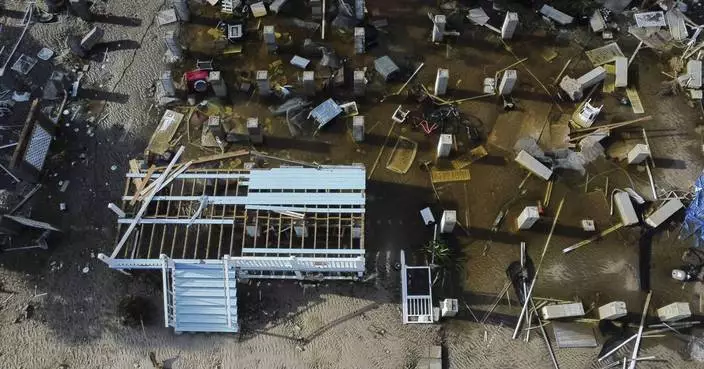NEW YORK (AP) — It’s not just a book.
Back in the 1450s, when the Bible became the first major work printed in Europe with moveable metal type, Johannes Gutenberg was a man with a plan.
The German inventor decided to make the most of his new technology — the movable-type printing press — by producing an unprecedented version of the Scripture for wealthy customers who could interpret Latin: leaders of the Catholic Church.
Though he planned on printing 150 Bibles, increasing demand motivated him to produce 30 extra copies, which led to a total of 180. Currently known as the “Gutenberg Bibles”, around 48 complete copies are preserved.
None is known to be kept in private hands. Among those in the United States, a paper Bible can be seen at the Morgan Library & Museum, in New York City. Two more copies in vellum lie in the underground vaults, next to 120,000 other books.
Why should anyone — religiously observant or not — feel compelled to see a Gutenberg Bible up close? Here’s a look at how its printing influenced the history of books and the religious landscape. And what a 500-year-old volume can still reveal.
The term refers to each of the two-volume Bibles printed in Gutenberg’s workshop around 1454.
Before that, all existing Bibles were copied by hand. The process could take up to a year, said John McQuillen, associate curator at the Morgan Library. In contrast, it is believed that Gutenberg completed his work in about six months.
Each Gutenberg Bible has nearly 1,300 pages and weighs around 60 pounds. It’s written in Latin and printed in double columns, with 42 lines per page.
Most were printed on paper. A few others on animal skin.
When a Bible came off the press, only the black letters were printed. Hand decorations and bindings were added later, depending on each buyer’s taste and budget.
Some ornamentations were added in Germany. Others in France, Belgium or Spain.
Therefore, each Gutenberg Bible is unique, McQuillen said.
Gutenberg’s invention produced a massive multiplication of complete copies of biblical texts.
The first impact was among scholars and learned priests who had easier access than ever before, said Richard Rex, professor of Reformation History from the University of Cambridge.
“This massive multiplication even led to the wider adoption of the term ‘Bible’ (Biblia) to describe the book,” Rex said. “Medieval authors and others do speak sometimes of ‘the Bible’, but more commonly of ‘scripture’.”
Psychologically, Rex said, the appearance of the printed text — its regularity, precision and uniformity — contributed to a tendency to resolve theological arguments by reference to the biblical text alone.
Later on, the printing of Bibles in vernacular languages — especially from Luther’s Bible (early 1520s) and Tyndale’s New Testament (mid 1520s) onwards — affected the way that ordinary parishioners related to religion and the clergy.
The limits of literacy still meant that access to the Bible was far from universal. Gradually, though, religious leaders stopped being its main interpreters.
“The phenomenon of lay people questioning or interpreting the biblical text became more common from the 1520s onwards,” Rex said. “Although the early Protestant Reformers, such as Luther, emphasized that they did not seek to create an interpretative ‘free for all’, this was probably the predictable consequence of their appeal to ‘scripture alone’.”
Three times per year, a curator from the Morgan Library turns the page of the Gutenberg Bible on display. It’s leaves not only tell a tale of Scripture, but of those who possessed it.
A few years ago, by studying its handmade initials, McQuillen was the one to figure out the origin of its decoration: a German monastery that no longer exists.
Similarly, in the 2000s, a Japanese researcher found little marks on the surface of the Old Testament’s paper copy. Her findings revealed that those leaves were used by Gutenberg’s successors for their own edition, printed in 1462.
“For as many times as the Gutenberg Bible have been looked at, it seems like every time a researcher comes in, something new can be discovered,” McQuillen said.
“This book has existed for 500 years. Who are the people that have touched it? How can we talk about these personal histories in addition to the greater idea of what printing technology means on a European or global scale?” he said.
Among the thousands of Bibles that J. P. Morgan acquired, owners made various annotations. Individual names, birth dates, details that reflect a personal story behind.
“A Bible is now sort of a book on the shelf,” McQuillen said. “But at one point, this was a very personal object”.
“In a museum setting, they become art and a little bit distanced, but we try to break that distance down.”
Associated Press religion coverage receives support through the AP’s collaboration with The Conversation US, with funding from Lilly Endowment Inc. The AP is solely responsible for this content.

FILE - A detail of the Old Testament from the Gutenberg Bible on display at the personal library of Pierpont Morgan, the Morgan Library and Museum, in New York, May 19, 2008. Three times per year, a library curator turns the page. (AP Photo/Mary Altaffer, File)
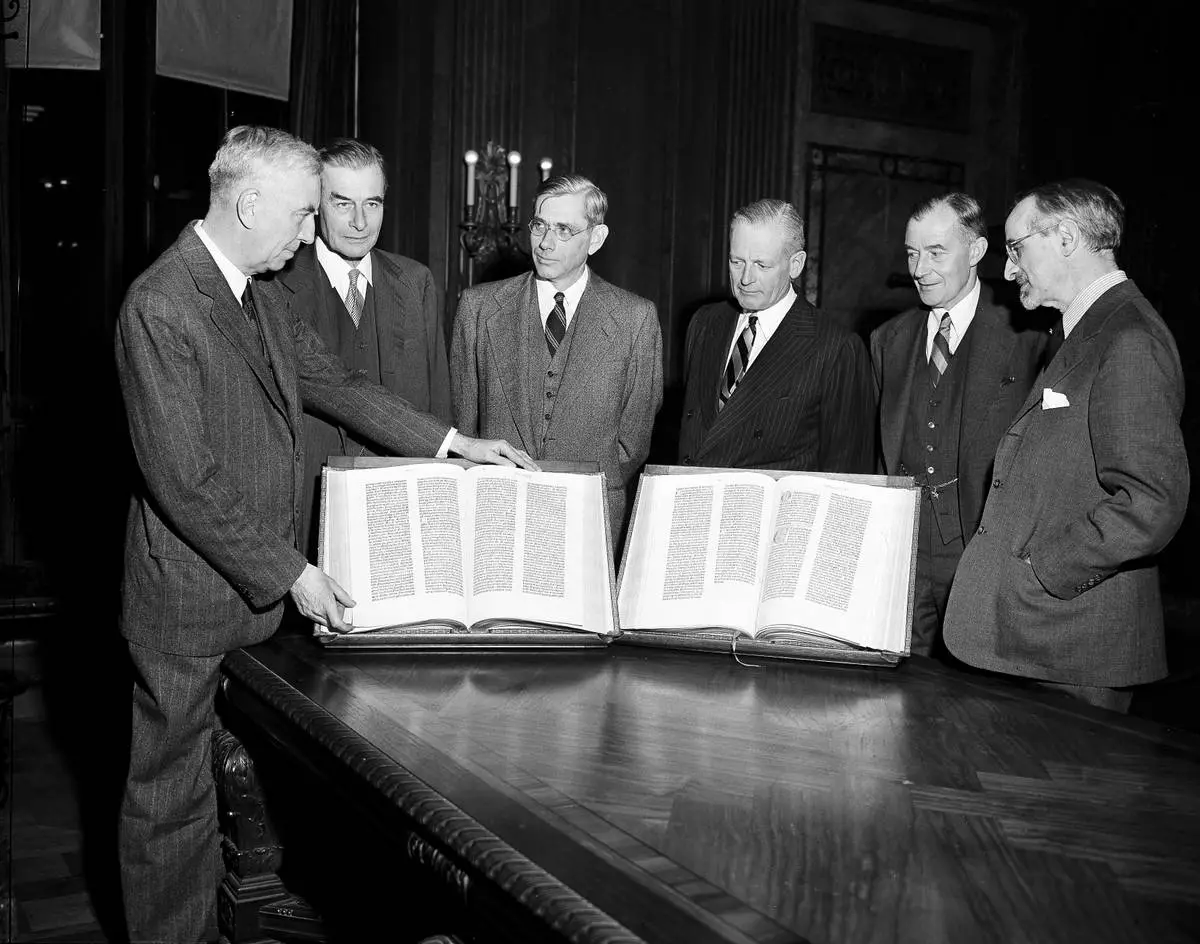
FILE - Members of the New York Public Library Board of Trustees pose for a photo with the first Gutenberg Bible to reach the U.S. 100 years prior, before it is placed on display in the lobby of the New York Public Library on Nov. 7, 1947. From left are Morris Hadley, Junius S. Morgan, Ralph A. Beals, Henry C. Taylor, Roland L. Redmond, and Dr. Albert Berg. The Bible was bought by book collector James Lenox for what was then considered the "mad" price of $2,600. (AP Photo/Ed Ford, File)

FILE - A 1455 Biblia Latina by Johannes Gutenberg and Johann Fust, foreground left, is on display inside the personal library of Pierpont Morgan, at the Morgan Library and Museum, in New York, April 25, 2006. Three times per year, a library curator turns the page. (AP Photo/Richard Drew, File)
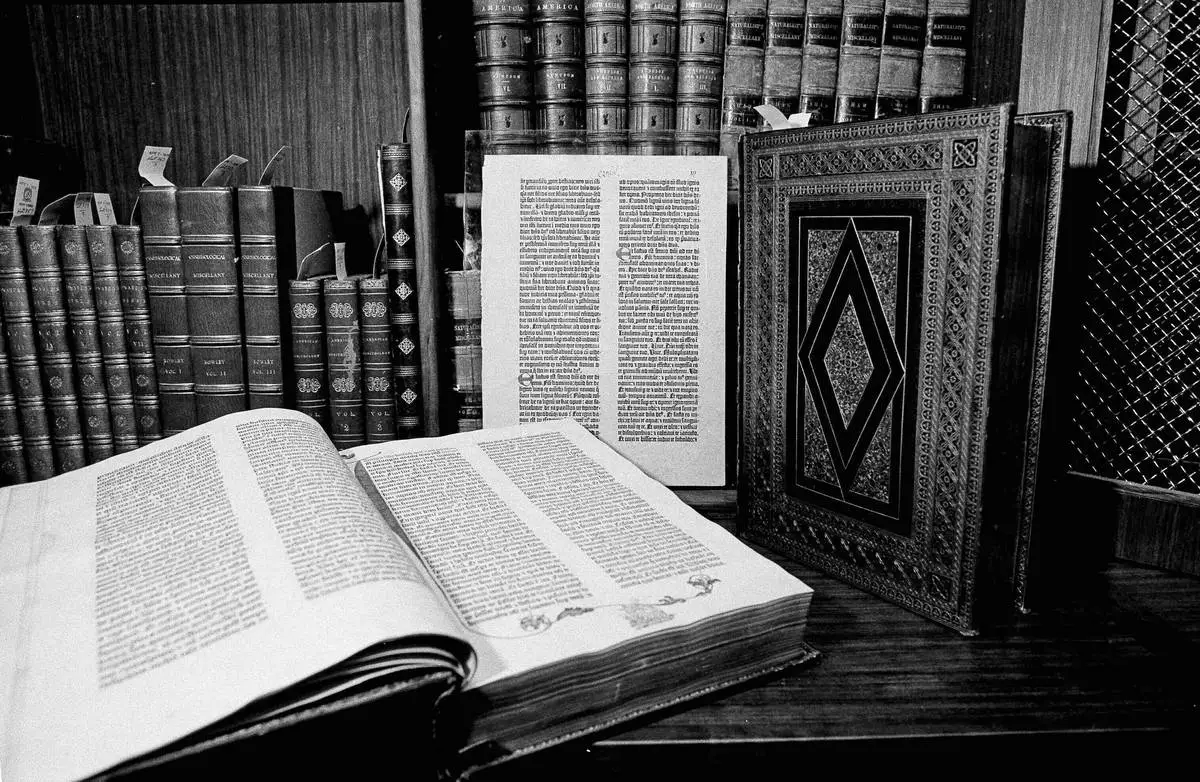
FILE - Two volumes of the over 500-year-old Gutenberg Bible are pictured in New York in April 1978. Johannes Gutenberg planned on printing 150 Bibles, but increasing demand motivated him to produce 30 extra copies, which led to a total of 180. Currently known as the “Gutenberg Bibles”, around 48 complete copies are preserved. (AP Photo/G. Paul Burnett, File)
CAPE CANAVERAL, Fla. (AP) — SpaceX launched a rescue mission for the two stuck astronauts at the International Space Station on Saturday, sending up a downsized crew to bring them home but not until next year.
The capsule rocketed into orbit to fetch the test pilots whose Boeing spacecraft returned to Earth empty earlier this month because of safety concerns. The switch in rides left it to NASA’s Nick Hague and Russia’s Alexander Gorbunov to retrieve Butch Wilmore and Suni Williams.
Since NASA rotates space station crews approximately every six months, this newly launched flight with two empty seats reserved for Wilmore and Williams won’t return until late February. Officials said there wasn’t a way to bring them back earlier on SpaceX without interrupting other scheduled missions.
By the time they return, the pair will have logged more than eight months in space. They expected to be gone just a week when they signed up for Boeing’s first astronaut flight that launched in June.
NASA ultimately decided that Boeing’s Starliner was too risky after a cascade of thruster troubles and helium leaks marred its trip to the orbiting complex. The space agency cut two astronauts from this SpaceX launch to make room on the return leg for Wilmore and Williams.
Williams has since been promoted to commander of the space station, which will soon be back to its normal population of seven. Once Hague and Gorbunov arrive this weekend, four astronauts living there since March can leave in their own SpaceX capsule. Their homecoming was delayed a month by Starliner’s turmoil.
Hague noted before the flight that change is the one constant in human spaceflight.
“There’s always something that is changing. Maybe this time it’s been a little more visible to the public,” he said.
Hague was thrust into the commander’s job for the rescue mission based on his experience and handling of a launch emergency six years ago. The Russian rocket failed shortly after liftoff, and the capsule carrying him and a cosmonaut catapulted off the top to safety.
Rookie NASA astronaut Zena Cardman and veteran space flier Stephanie Wilson were pulled from this flight after NASA opted to go with SpaceX to bring the stuck astronauts home. The space agency said both would be eligible to fly on future missions. Gorbunov remained under an exchange agreement between NASA and the Russian Space Agency.
“I don’t know exactly when my launch to space will be, but I know that I will get there,” Cardman said from NASA’s Kennedy Space Center, where she took part in the launch livestream. Wilson joined her there for the early afternoon liftoff.
Moments before liftoff, Hague paid tribute to his two colleagues left behind: “Unbreakable. We did it together.” Once in orbit, he called it a ”sweet ride” and thanked everyone who made it possible.
Earlier, Hague acknowledged the challenges of launching with half a crew and returning with two astronauts trained on another spacecraft.
“We’ve got a dynamic challenge ahead of us,” Hague said after arriving from Houston last weekend. “We know each other and we’re professionals and we step up and do what’s asked of us.”
SpaceX has long been the leader in NASA’s commercial crew program, established as the space shuttles were retiring more than a decade ago. SpaceX beat Boeing in delivering astronauts to the space station in 2020 and it’s now up to 10 crew flights for NASA.
Boeing has struggled with a variety of issues over the years, repeating a Starliner test flight with no one on board after the first one veered off course. The Starliner that left Wilmore and Williams in space landed without any issues in the New Mexico desert on Sept. 6, and has since returned to Kennedy Space Center. A week ago, Boeing’s defense and space chief was replaced.
Delayed by Hurricane Helene pounding Florida, the latest SpaceX liftoff marked the first for astronauts from Launch Complex 40 at Cape Canaveral Space Force Station. SpaceX took over the old Titan rocket pad nearly two decades ago and used it for satellite launches, while flying crews from Kennedy’s former Apollo and shuttle pad next door. The company wanted more flexibility as more Falcon rockets soared.
The Associated Press Health and Science Department receives support from the Howard Hughes Medical Institute’s Science and Educational Media Group. The AP is solely responsible for all content.

NASA astronaut Nick Hague, right, talks to his family members as Roscosmos cosmonaut Aleksandr Gorbunov looks on after leaving the Operations and Checkout building for a trip to the launch pad 40 Saturday, Sept. 28, 2024, at the Kennedy Space Center in Cape Canaveral, Fla. Two astronauts are beginning a mission to the International Space Station. (AP Photo/Chris O'Meara)

A SpaceX Falcon 9 rocket with a crew of two lifts off from launch pad 40 at the Cape Canaveral Space Force Station Saturday, Sept. 28, 2024 at Cape Canaveral, Fla. (AP Photo/John Raoux)
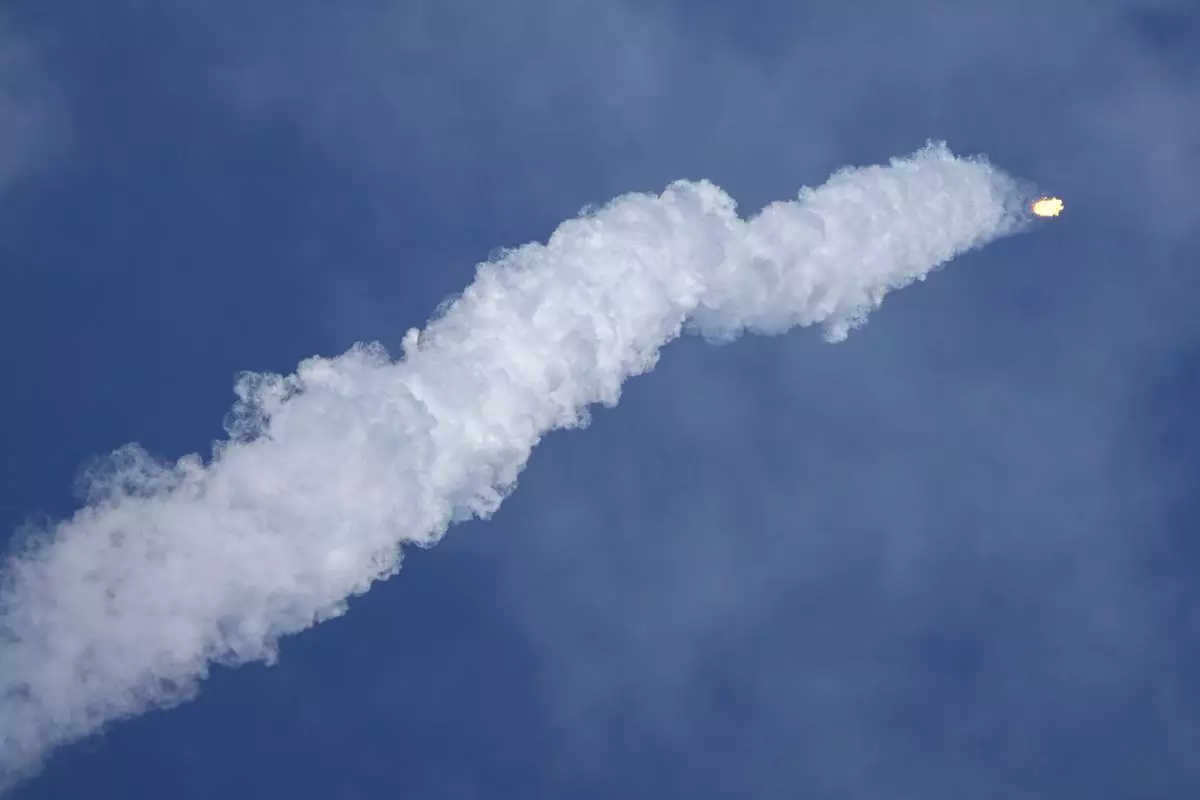
A SpaceX Falcon 9 rocket with a crew of two lifts off from launch pad 40 at the Cape Canaveral Space Force Station Saturday, Sept. 28, 2024 at Cape Canaveral, Fla. (AP Photo/John Raoux)
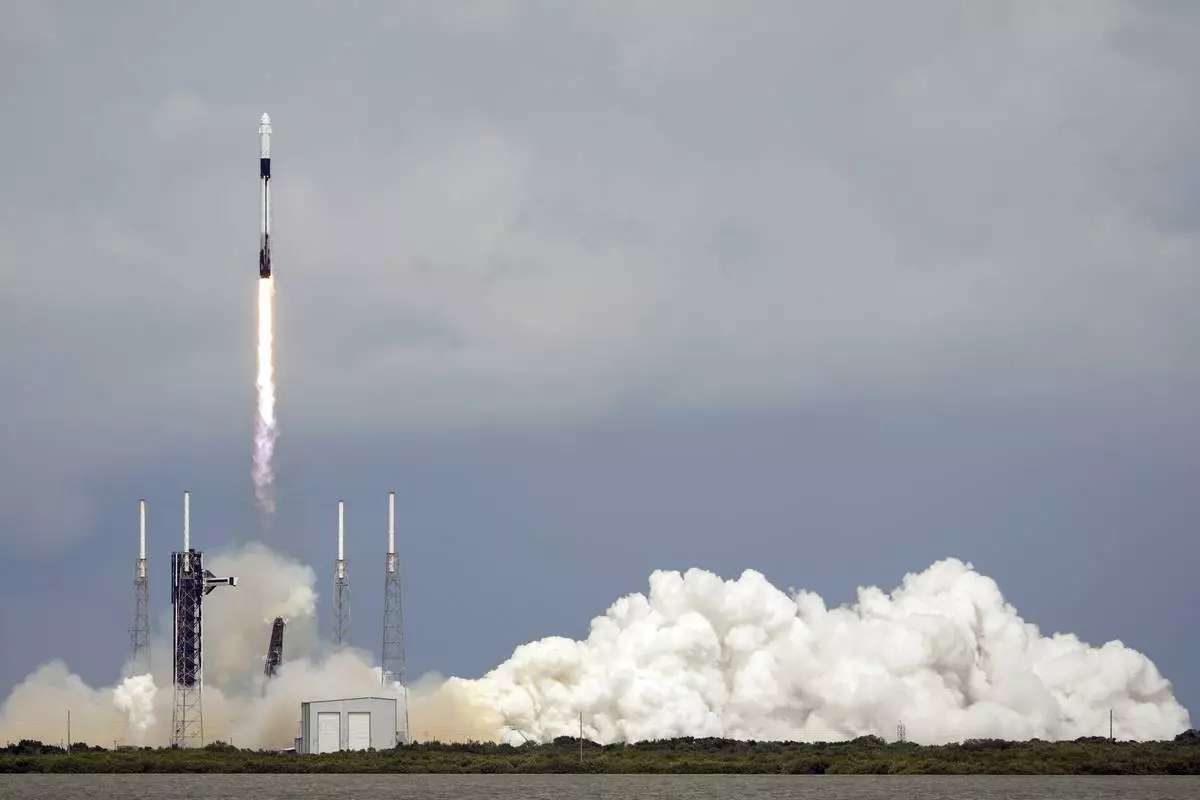
A SpaceX Falcon 9 rocket with a crew of two lifts off from launch pad 40 at the Cape Canaveral Space Force Station Saturday, Sept. 28, 2024 at Cape Canaveral, Fla. (AP Photo/John Raoux)
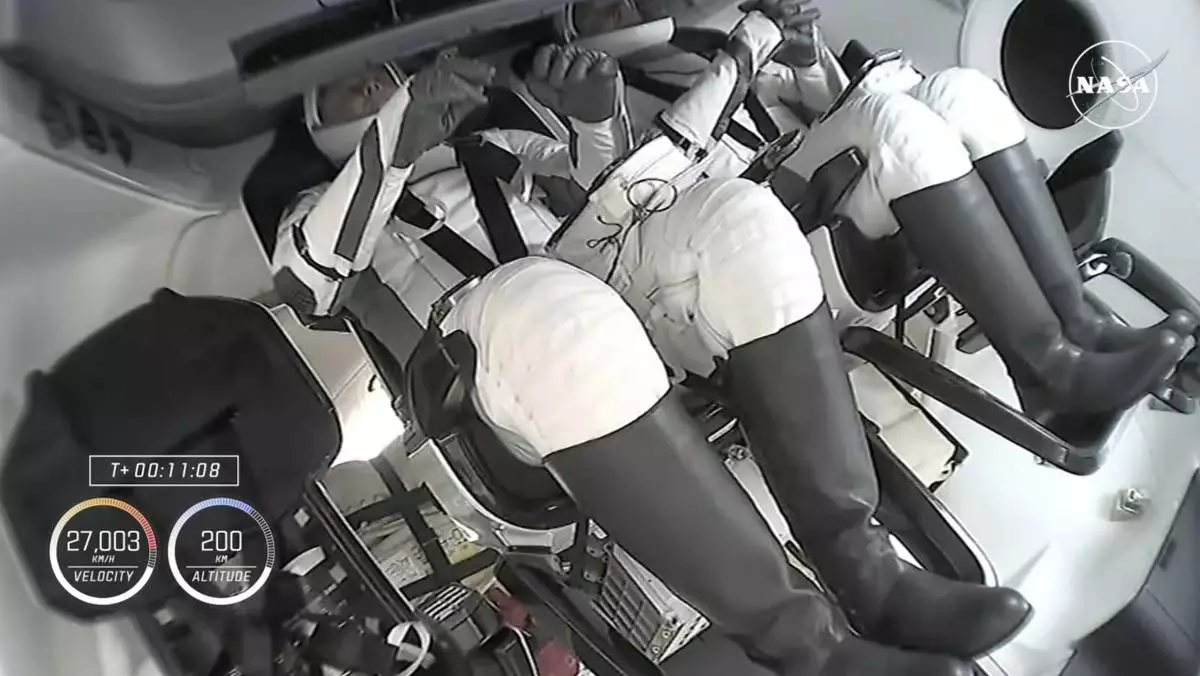
In this image from video provided by NASA, Roscosmos cosmonaut Aleksandr Gorbunov, left, and astronaut Nick Hague travel inside a SpaceX capsule en route to the International Space Station after launching from the Kennedy Space Center in Cape Canaveral, Fla., Saturday, Sept. 28, 2024. (NASA via AP)
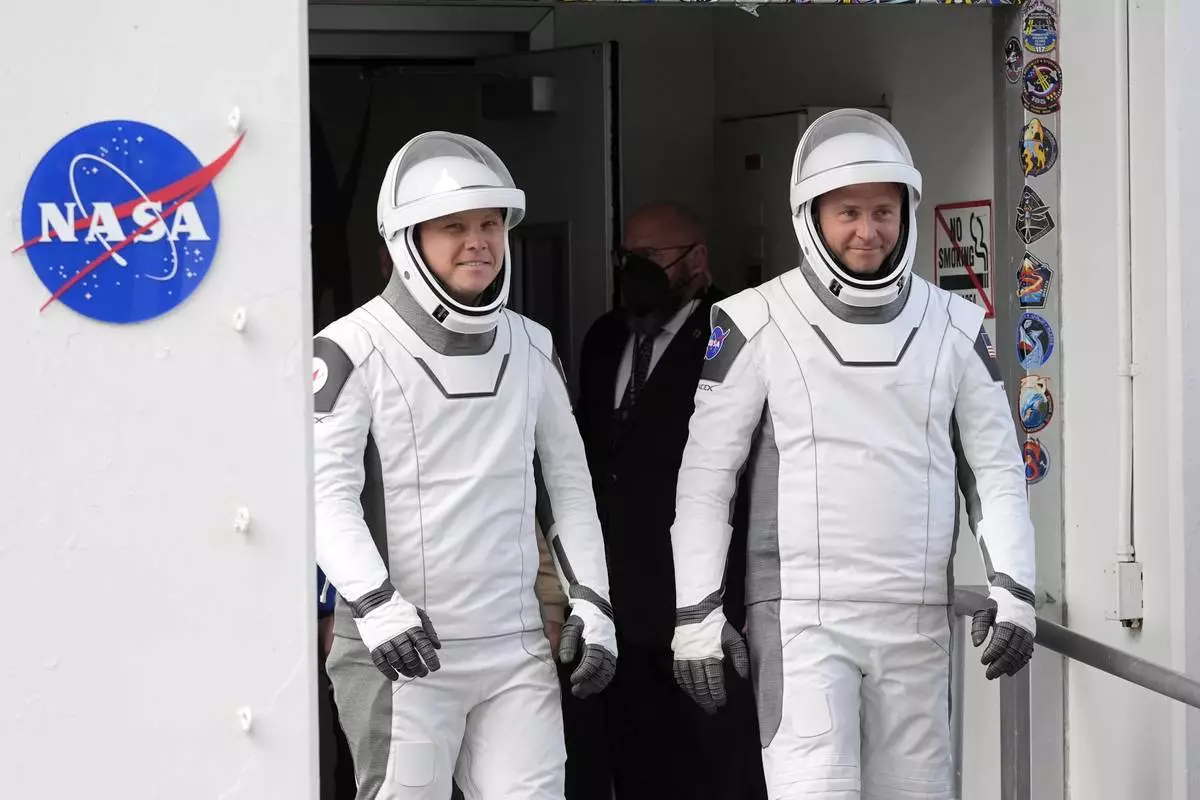
Roscosmos cosmonaut Aleksandr Gorbunov, left, and NASA astronaut Nick Hague leave the Operations and Checkout Building on their way to Launch Complex 40 for a mission to the International Space Station Saturday, Sept. 28, 2024 at Cape Canaveral, Fla., (AP Photo/John Raoux)

NASA astronaut Nick Hague, left, and Roscosmos cosmonaut Aleksandr Gorbunov wave as they leave the Operations and Checkout building for a trip to the launch pad 40 Saturday, Sept. 28, 2024, at the Kennedy Space Center in Cape Canaveral, Fla. Two astronauts are beginning a mission to the International Space Station. (AP Photo/Chris O'Meara)
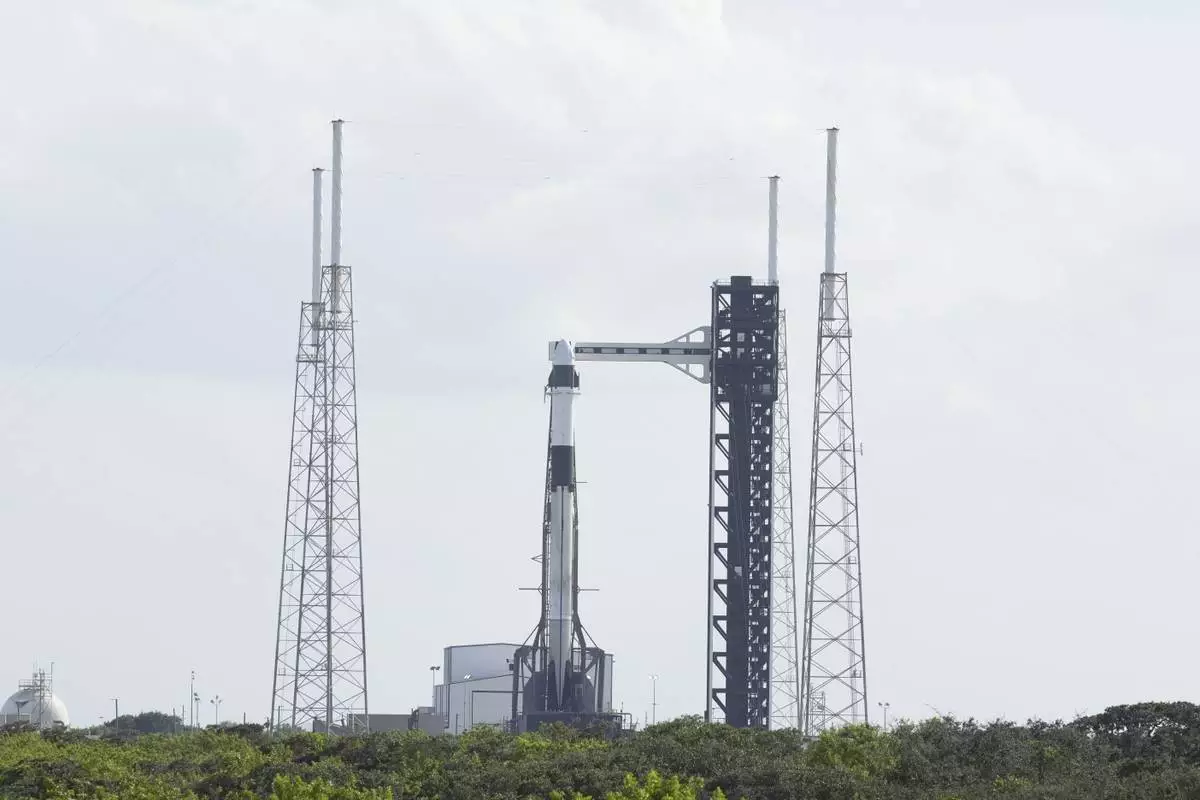
A SpaceX Falcon 9 rocket sits on Launch Complex 40 at the Space Force Station Friday, Sept. 27, 2024, in Cape Canaveral, Fla. Two astronauts are scheduled to begin a mission on Saturday afternoon to the International Space Station. (AP Photo/Chris O'Meara)
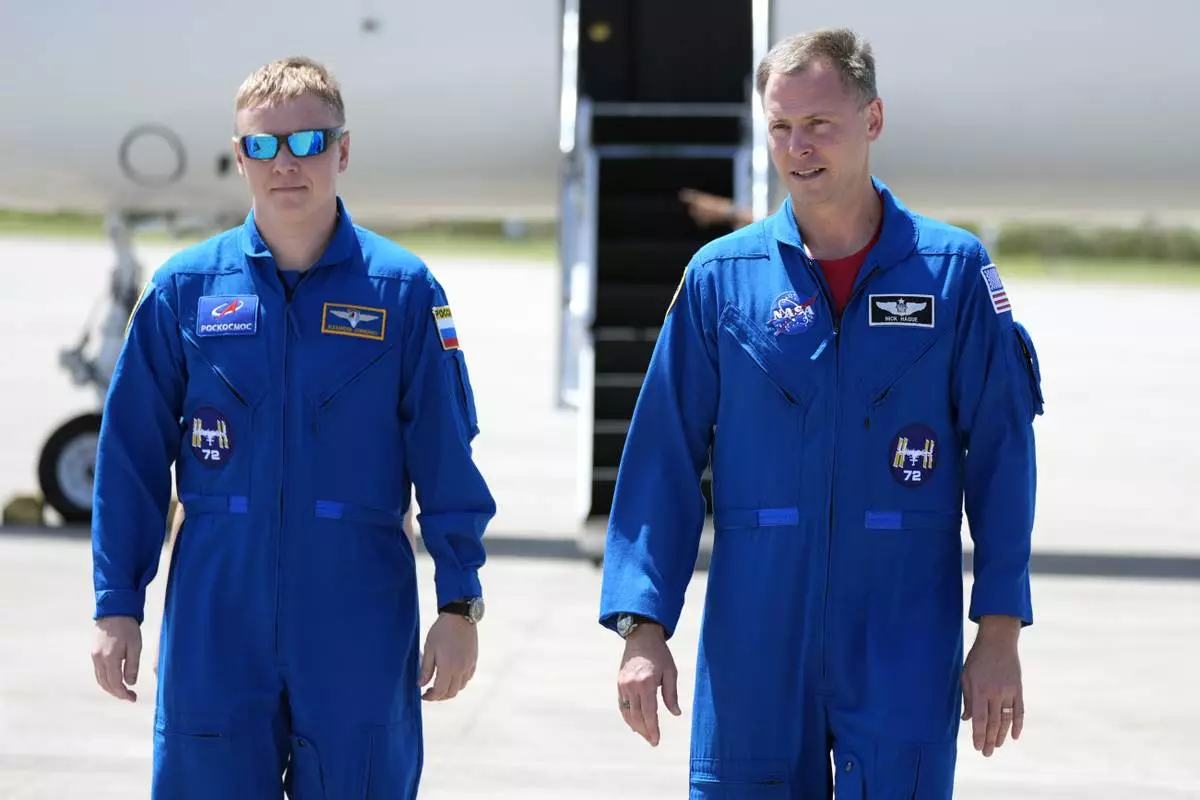
Roscosmos cosmonaut Aleksandr Gorbunov, left, and NASA astronaut Nick Hague arrive at the Kennedy Space Center in Cape Canaveral, Fla., Saturday, Sept. 21, 2024 as they prepare for their mission to the International Space Station. (AP Photo/John Raoux)
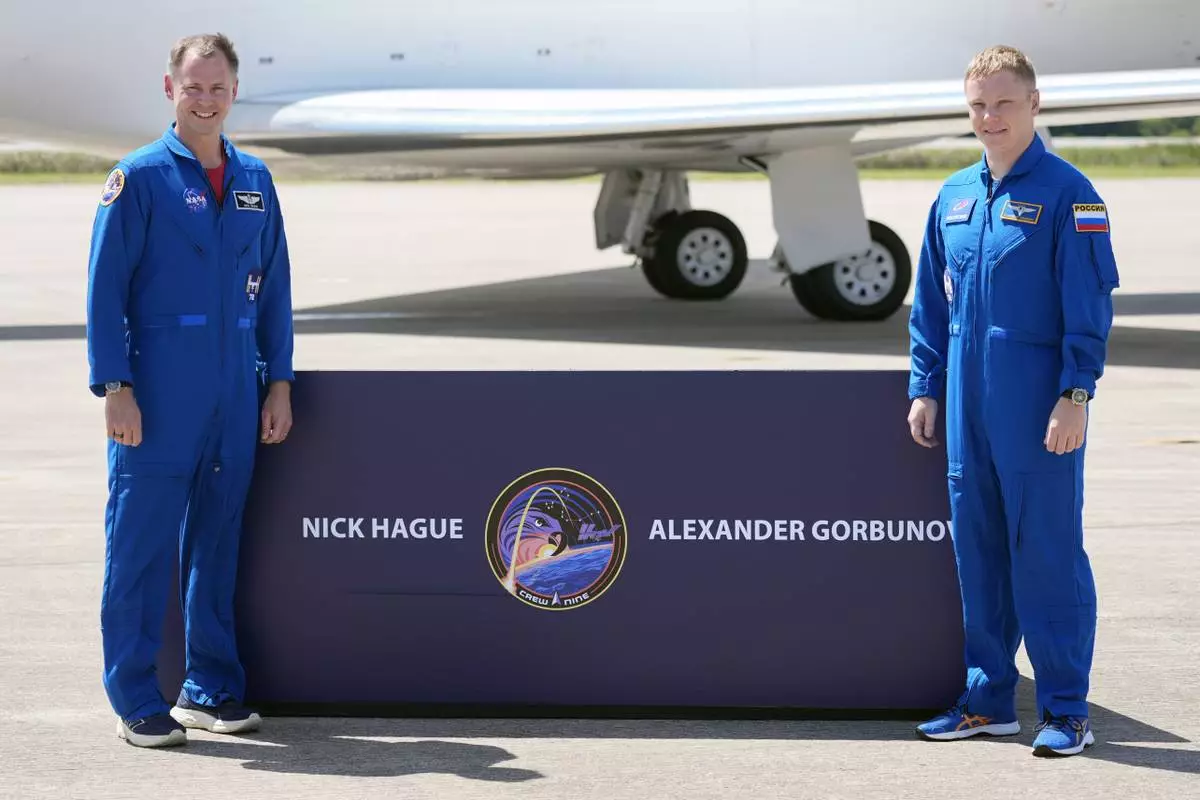
NASA astronaut Nick Hague, left, and Roscosmos cosmonaut Aleksandr Gorbunov pose for a photo after they arrived at the Kennedy Space Center in Cape Canaveral, Fla., Saturday, Sept. 21, 2024 as they prepare for their mission to the International Space Station. (AP Photo/John Raoux)
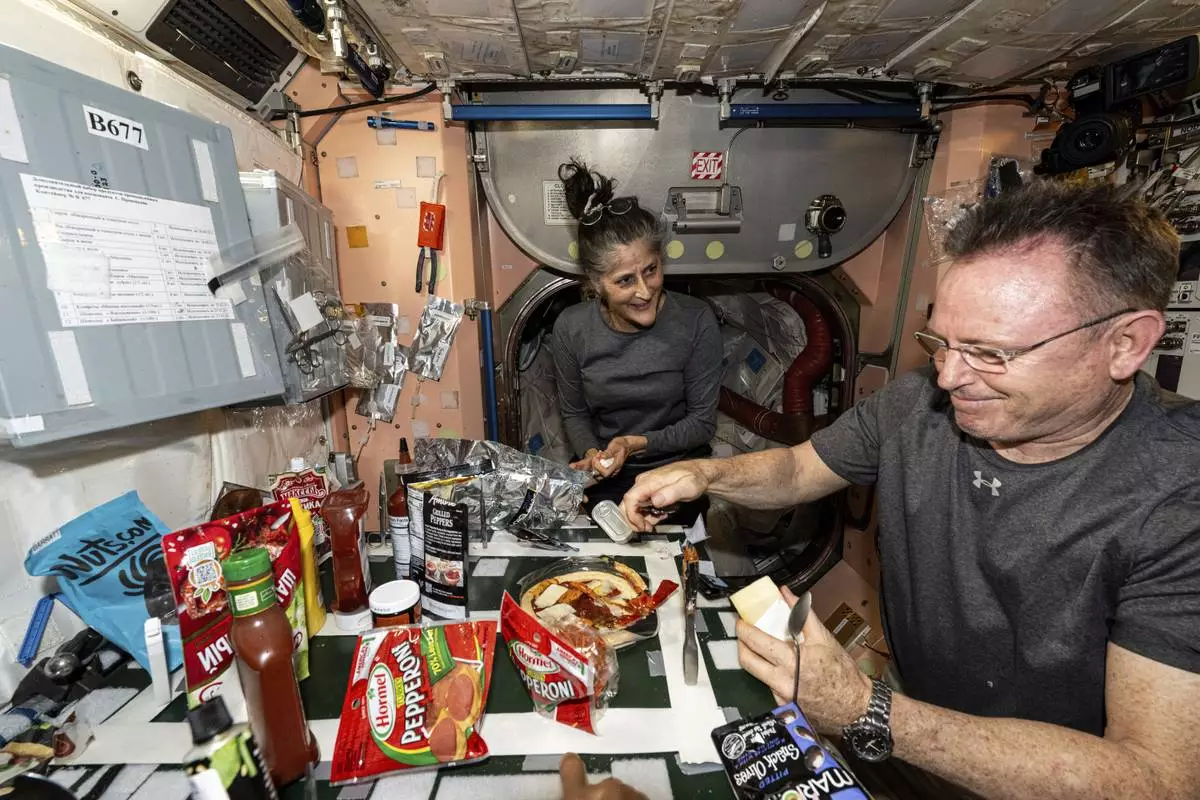
In this image released by NASA, NASA astronauts Suni Williams and Butch Wilmore, both Expedition 71 Flight Engineers, make pizza aboard the International Space Station's galley located inside the Unity module on Sept. 9, 2024. Items are attached to the galley using tape and velcro to keep them from flying away in the microgravity environment. (NASA via AP)
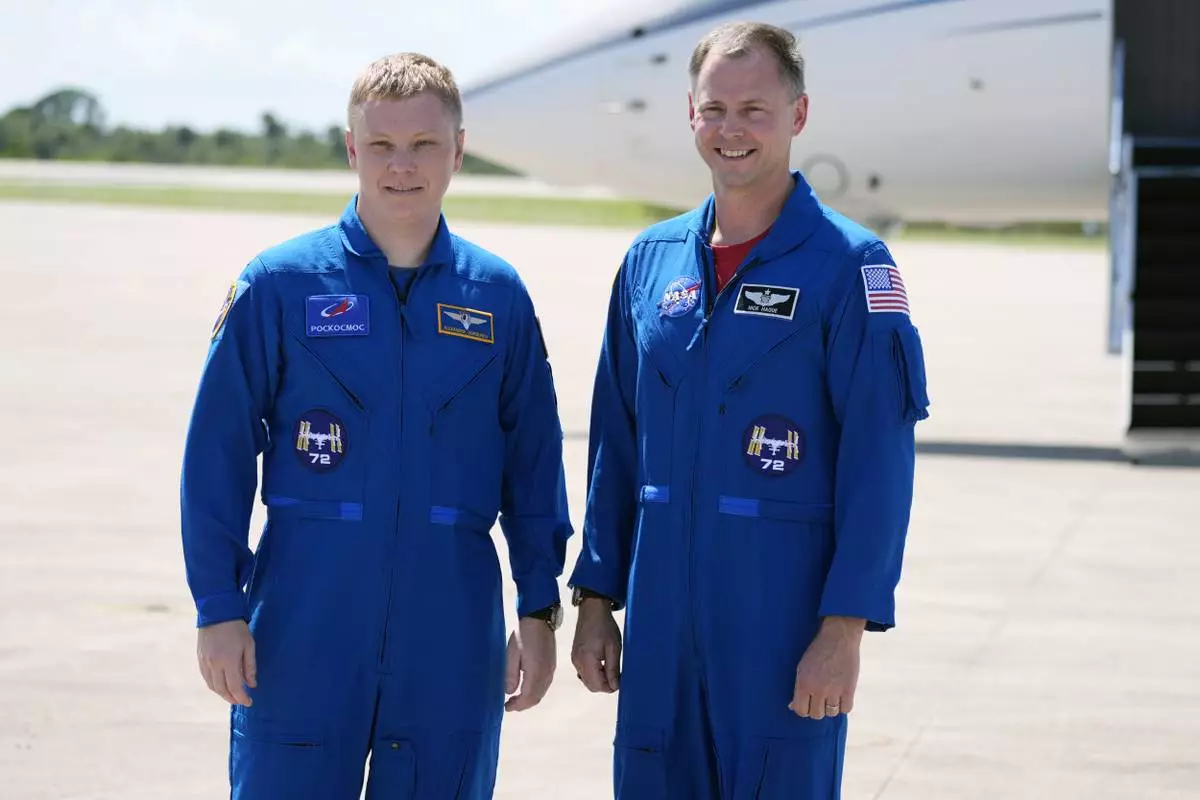
Roscosmos cosmonaut Aleksandr Gorbunov, left, and NASA astronaut Nick Hague pose for a photo after they arrived at the Kennedy Space Center in Cape Canaveral, Fla., Saturday, Sept. 21, 2024 to prepare for their mission to the International Space Station. (AP Photo/John Raoux)
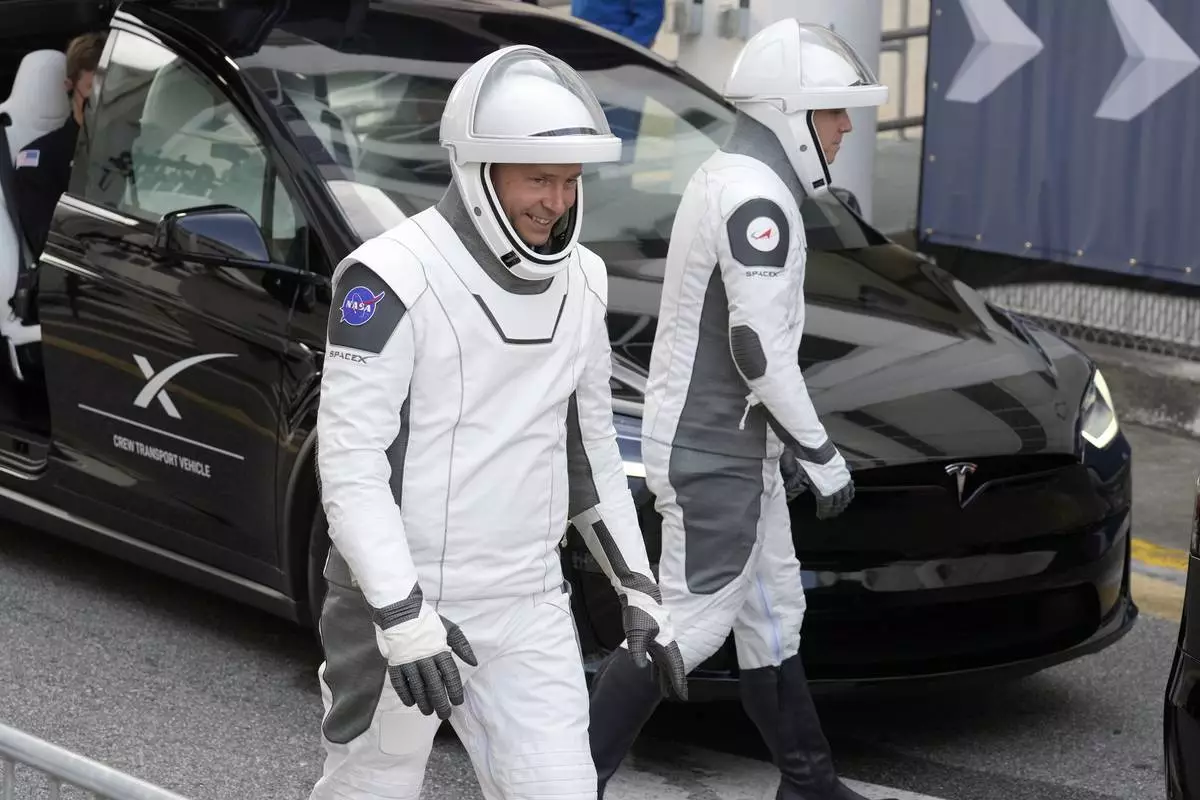
NASA astronaut Nick Hague, left, and Roscosmos cosmonaut Aleksandr Gorbunov leave the Operations and Checkout building for a trip to the launch pad 40 Saturday, Sept. 28, 2024, at the Kennedy Space Center in Cape Canaveral, Fla. (AP Photo/Chris O'Meara)

NASA astronaut Nick Hague waves as he leaves the Operations and Checkout building for a trip to the launch pad 40 Saturday, Sept. 28, 2024, at the Kennedy Space Center in Cape Canaveral, Fla. (AP Photo/Chris O'Meara)
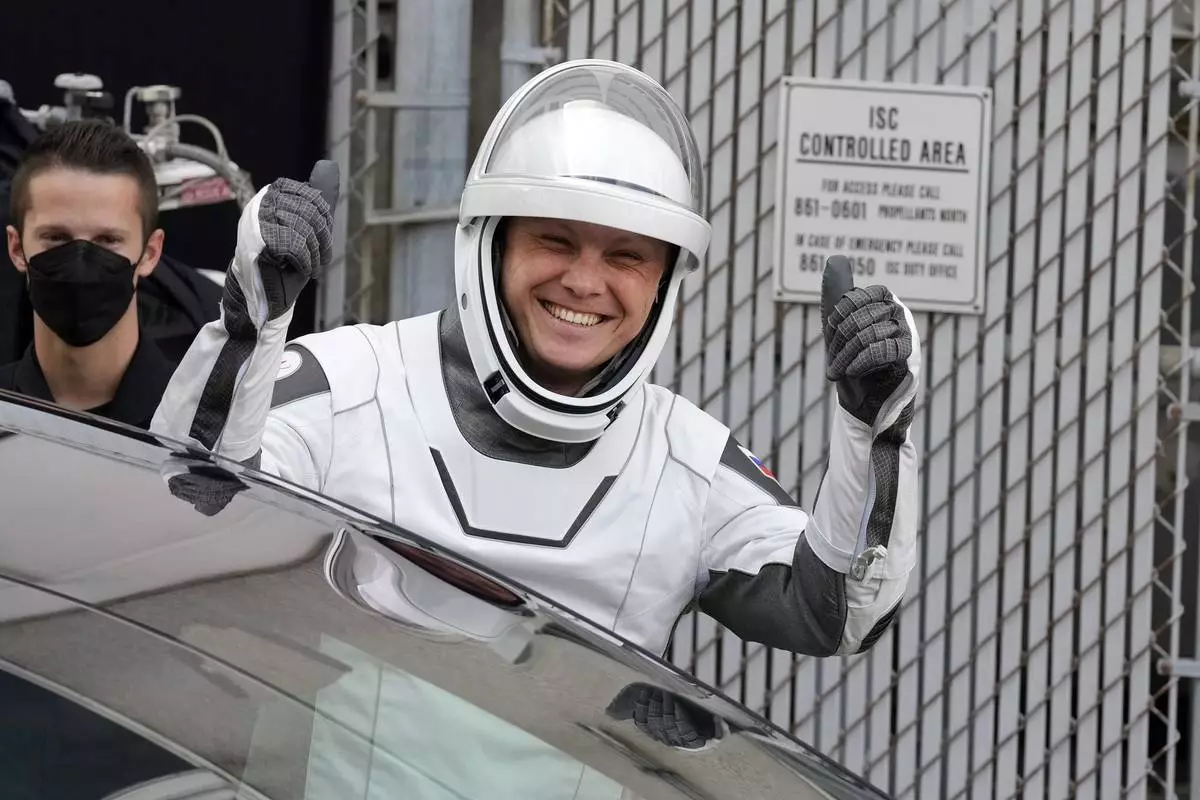
Roscosmos cosmonaut Aleksandr Gorbunov reacts as he leaves the Operations and Checkout building for a trip to the launch pad 40 Saturday, Sept. 28, 2024, at the Kennedy Space Center in Cape Canaveral, Fla. (AP Photo/Chris O'Meara)
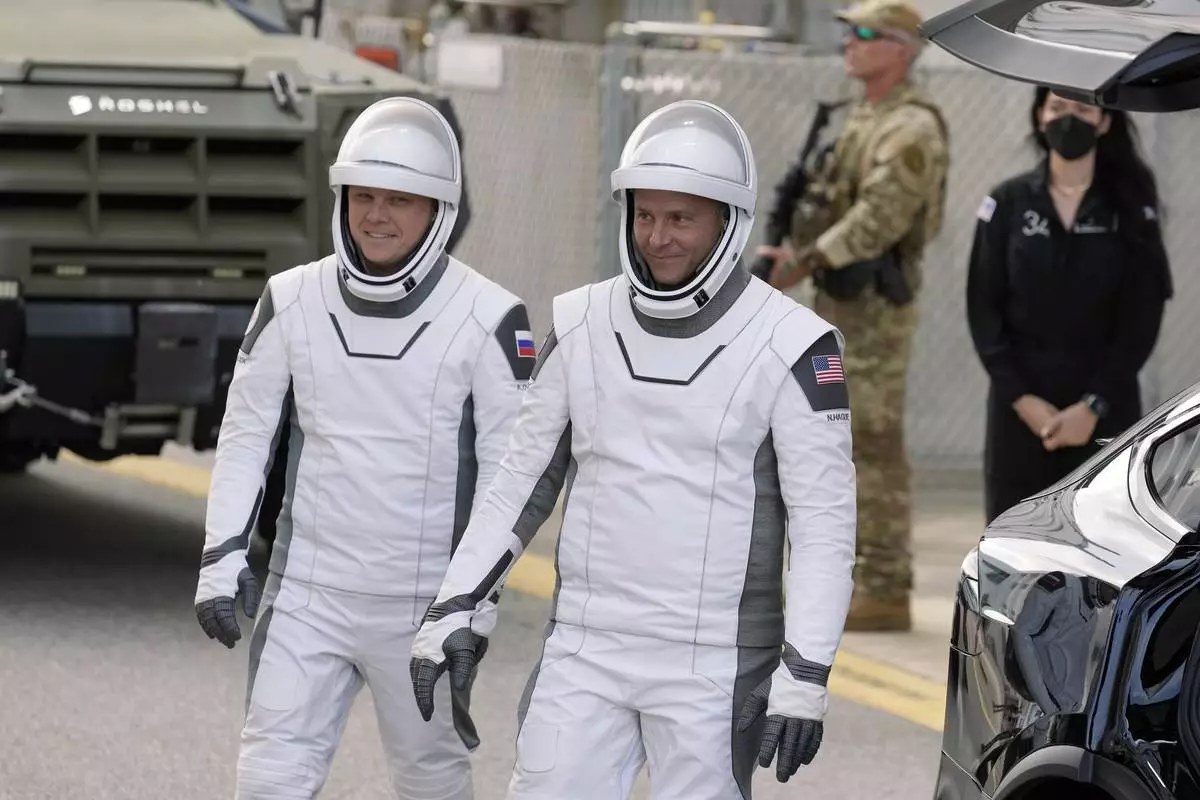
NASA astronaut Nick Hague, right, and Roscosmos cosmonaut Aleksandr Gorbunov leave the Operations and Checkout building for a trip to the launch pad 40 Saturday, Sept. 28, 2024, at the Kennedy Space Center in Cape Canaveral, Fla. (AP Photo/Chris O'Meara)
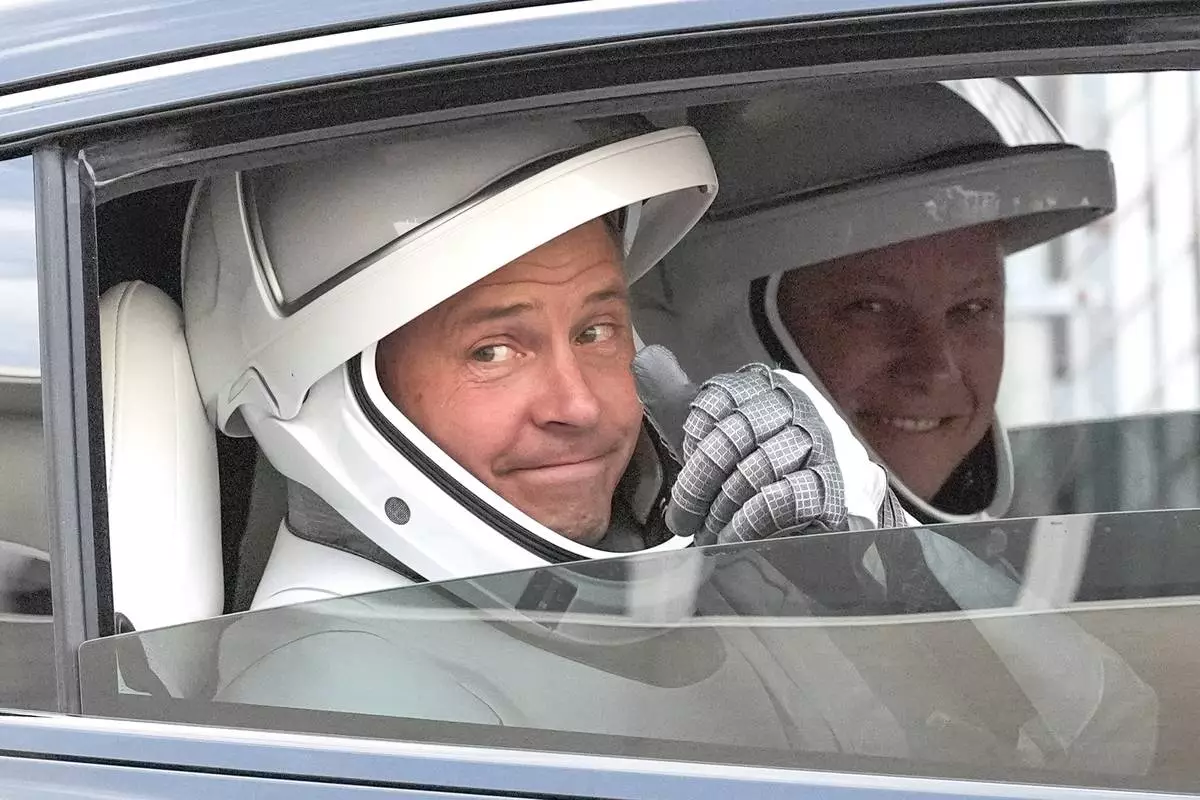
NASA astronaut Nick Hague, left, and Roscosmos cosmonaut Aleksandr Gorbunov, left, gives a thumbs up as they leave the Operations and Checkout Building on their way to Launch Complex 40 for a mission to the International Space Station Saturday, Sept. 28, 2024 at Cape Canaveral, Fla., (AP Photo/John Raoux)
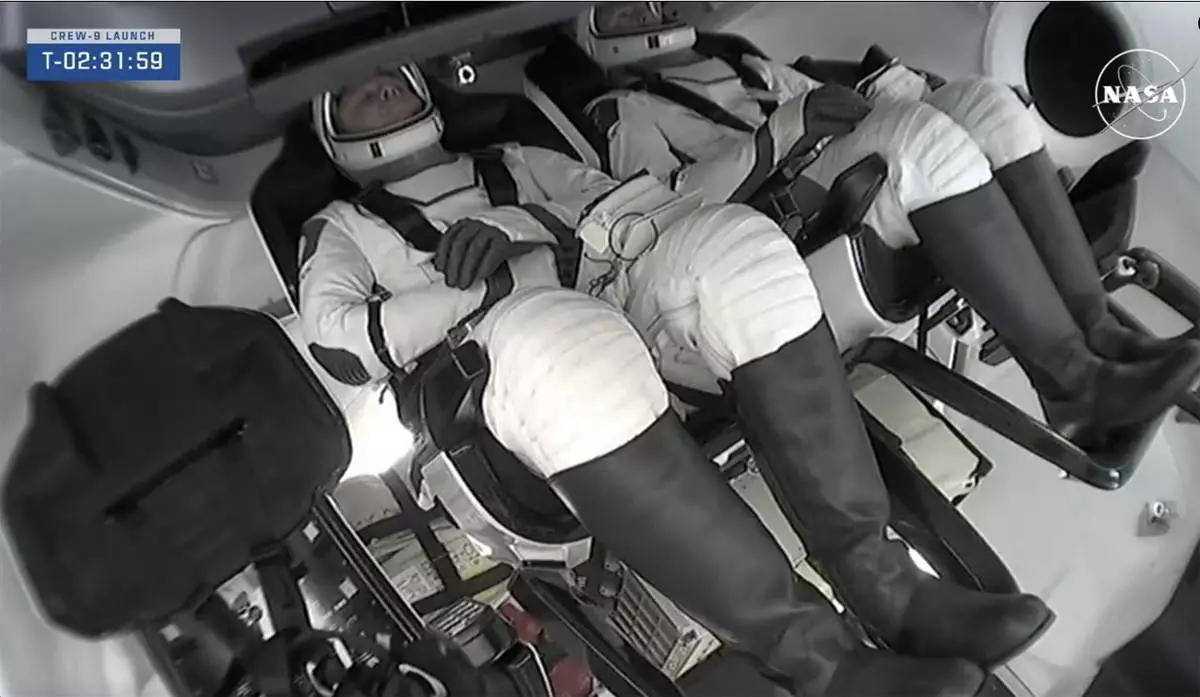
This image provided by NASA shows NASA astronaut Nick Hague and Roscosmos cosmonaut Aleksandr Gorbunov inside the SpaceX capsule Saturday, Sept. 28, 2024, at the Kennedy Space Center in Cape Canaveral, Fla. (NASA via AP)
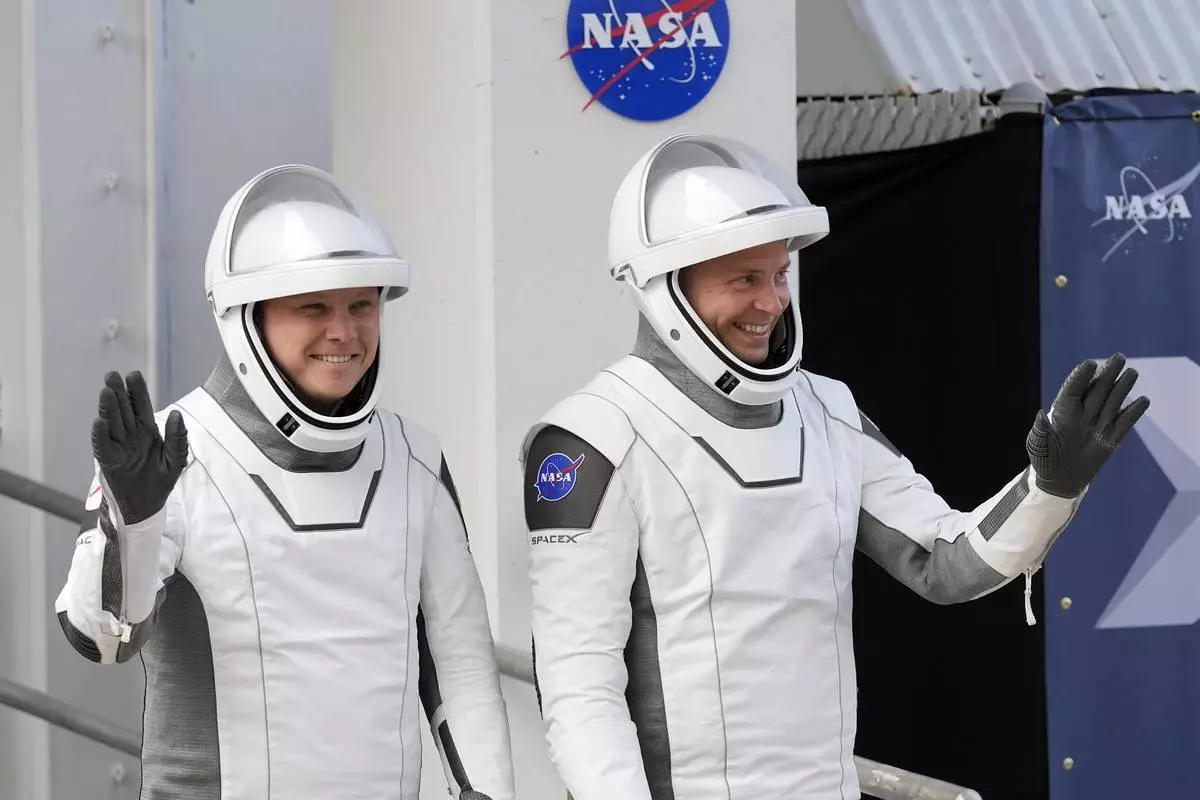
Roscosmos cosmonaut Aleksandr Gorbunov, left, and NASA astronaut Nick Hague wave as they leave the Operations and Checkout Building on their way to Launch Complex 40 for a mission to the International Space Station Saturday, Sept. 28, 2024 at Cape Canaveral, Fla., (AP Photo/John Raoux)






























